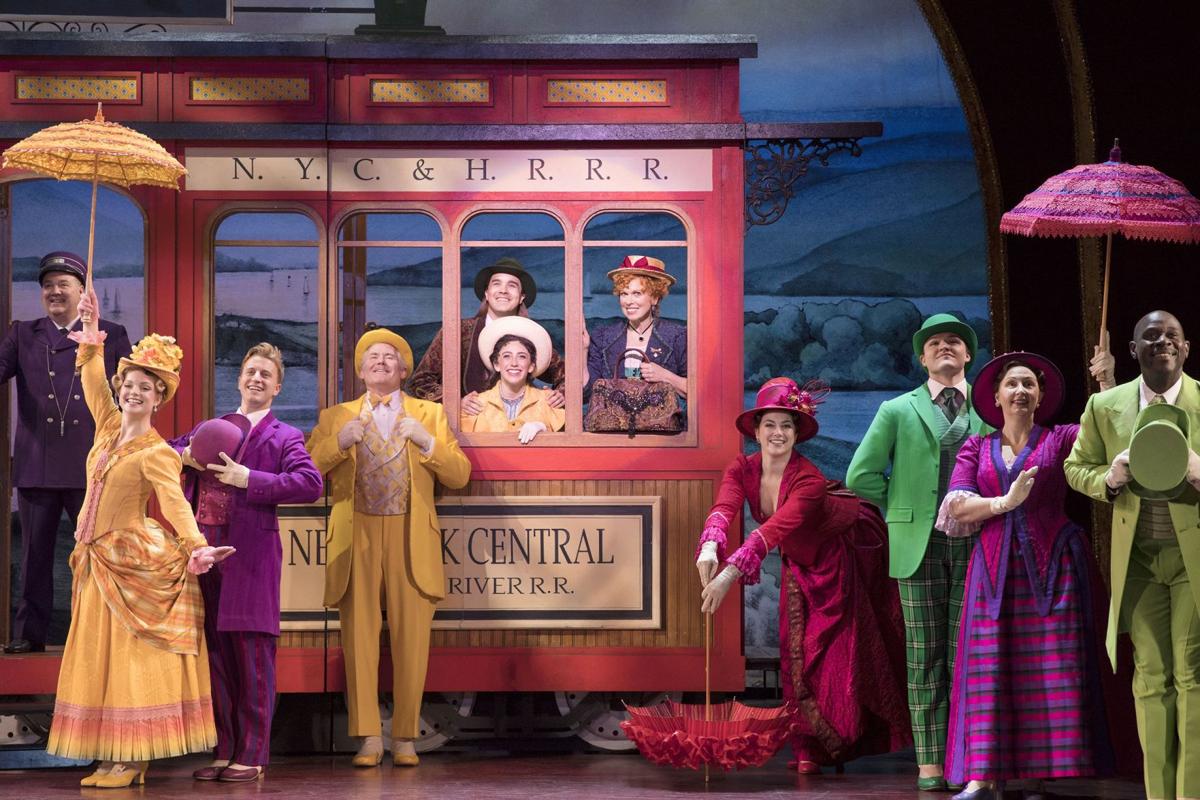Considering I had never seen a musical that was historical fiction, it felt like I had stepped into another world watching the revival of the musical “Hello, Dolly!” at the Fox Theatre on Tuesday night. Imagine stepping into a time machine and traveling all the way back to 1885. Yes, that far. The musical, was first performed on Broadway in 1964 with Carol Channing as the renowned Dolly Levi (Barbra Streisand played the role in the subsequent 1969 film version).
The setting is Yonkers, New York and you are surrounded by people rich and poor with women wearing colorful gowns with pastel-colored corsets, and curls tighter than a rubber band. That is where the musical is set. I was in complete awe of how amazing the wardrobe was. The show begins with the neighborhood welcoming Dolly Levi (Carolee Carmello), who is known for her matchmaking (and her occasional job as a dance teacher). Dolly travels to New York City to not only work her matchmaking magic but to also find love herself.
A big part of the show is the amount of work done for the costumes and wardrobe, which was one of my favorite parts of the production.
Since this musical, directed by Jerry Zaks, was set in the 19th century, the fashion has definitely gone through quite the change. Articles of clothing such as bustle dresses (bustles were typically added to the dress to added shape and girth), corsets, colorful hats and caps, were worn in the 1800s and were solely defined by decoration. A lot of the costumes throughout the play had decorative pieces such as ribbons or bows attached to them.
For men’s wardrobe, they would typically wear suits and ties, top hats, and trench coats which were seen throughout the various scenes. In one section of the show, the character Horace Vandergelder (played by actor John Bolton) is seen wearing a black suit and tie as he takes the character Miss Money to dinner. Also called the “Victorian era,” this type of clothing was seen as both casual and formal.
I think if I showed up in that in that musical dressed down in ripped jeans and a hoodie with my red hair, I would definitely be scolded by Irene Molloy (played on opening night in Atlanta by Jenny Hickman). The social status of the characters is represented by their wardrobe as well. The characters Cornelius Hackl (Daniel Beeman) and Barnaby Tucker (Sean Burns), both clerks under Vandergelder, decide to travel to The Big Apple to not only take an evening off from tirelessly working for small wages, but to also find love. Their attire consists of slacks and a button-down but as the scenes progressed, quickly changes to a suit and tie and newsboy caps. Seeing this distinct clothing really captured the divide between the rich and the poor.
Today’s fashions, consisting of Air Force 1’s, ripped jeans, and Champion hoodies are certainly not something that would be worn in the streets of Yonkers, New York in 1885. After the 19th century, fashion escalated with dresses being worn without the bustle and corset. For men, newsboy caps eventually made way for baseball caps, plaid button-ups, and blue jeans in the 1990s.
This musical really showcases the time period well and as I watched, it put me into the shoes of the show’s young women, Minnie Fay (Chelsea Cree Groen) and Ermengarde (Laura Sky Herman). “Hello, Dolly!” really brought me back in time, so if you like bustle dresses and comedic matchmakers, I definitely suggest you see this show.
VOX teens attended the opening night of the musical, thanks to the generosity of Broadway in Atlanta and Most Valuable Kids of Greater Atlanta.




